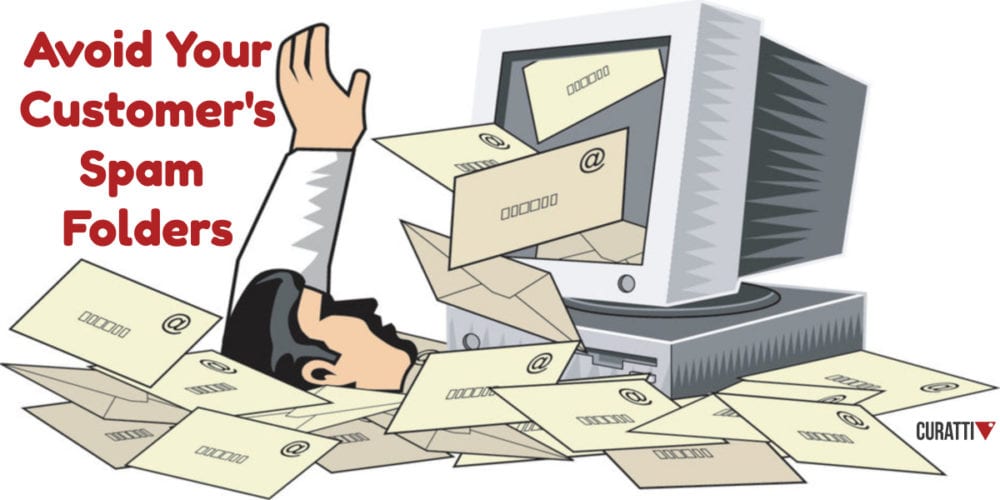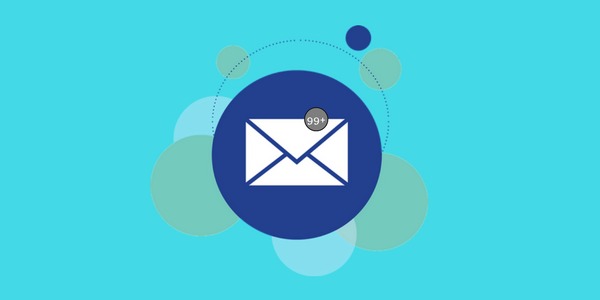10 Reasons Your Emails May Land in the Spam Folder?

With the expansion of commercialization in digital marketing, our Email inboxes are regularly bombarded with emails from companies or individuals who are apparently trying to give us a free bank account, free insurance, or transfer an amount worth a fortune. Hilarious, right?
OK, they’re not-so-hilarious! These SPAM emails are actually downright irritating and time-consuming. Spammy emails often make their way into our focused inboxes, thereby encroaching our digital space. However, a lot of times, amongst all of the real spam, genuine emails do get lost. When businesses adopt half-baked approaches towards their Emailing endeavors, they often find themselves sitting in the SPAM folder of their target audience.
What if your business is on the receiving end of this, and your emails never reach your subscribers’ Inbox?
Why does such a thing happen? Why do emails land in the spam folder?
Let’s find out.
You will notice throughout this blog post that most of the mentioned reasons are not mutually exclusive.
1. The Recipients/Subscribers Are Marking Your Emails as ‘Spam’
As simple as that! The very first reason as to why your emails are landing into the spam folders of many of your subscribers is that some of your audience has been marking your Email as ‘SPAM’. This could be happening if your content isn’t relevant to your audience. We will talk about more similar reasons as we move ahead in this post.
2. You Are Using a PAID Mailing List
So, if you have bought any mailing lists, chances are that most of the owners of these email addresses from the list, don’t know or barely know your business. Nor are even they likely to be interested in it.
In most instances, these mailing lists are entirely non-targeted… and many of the accounts might no longer be in use. So, few of the email addresses will have anything to do with your business/industry. If this is the case, there’s every chance that some of these people, and even some email service providers, will report your Emails as spam.
3. High Frequency of Sent Emails
Have you ever wondered about the number of promotional Emails you shoot out in a month/week? If the figure is too high, your own email service provider will flag your Emails as Spam. Even if you think you are playing smart by sending out the same Email with similar content using different Email addresses, you will end up in the Spam pit.
4. Email Engagement/Open Rate Is Low
The purpose of an Email is only served when the recipient clicks open. So, if the engagement rate or open rate of your past Emails has been comparatively low, this will not bode well. The engine behind the email service provider (engagement-based filtering) determines this rate closely and chooses to flag such Emails as ‘Spam’, accordingly.
5. Deceptive Subject Lines
Trying to tempt users/subscribers/audience into opening your emails by using misleading subject lines is a big no-no. Although many have probably done it at one point or another, the practice exploits the trust of your audience.
In short, avoid anything remotely akin to click-bait, as this can (will!) land your emails in SPAM folders.
6. The Absence of a Physical Address
Being in your subscribers’ good books can be challenging. However, the key to accomplishing that is by doing anything and everything that puts you forward as a reliable and relevant business. This is not as relevant for strictly online businesses, but If your emails fail to carry a physical address towards the end of the mail, your audience might grow suspicious. This physical address establishes your identity as a business that has a running office that is approachable, if need be.
7. The “From” Section Appears to be Illegitimate
Spammers often use this section in the email structure to toy around with unsuspecting email recipients. In an attempt to make the email appear genuine, they use aliases in the “From” field. Make sure that you stick to an easy and relatable name in the “From” field and not change it very often. Otherwise, your emails could invoke the Spam radar.
8. Not Adhering to the SPF, DKIM, & DMARC Validation Systems
Not having these authentication and validation systems in place for your business email can be risky. These email-validation systems/mechanisms detect and prevent email spoofing, prevent forged sender addresses in the email, and a lot more.
- DMARC (Domain-based Message Authentication, Reporting, and Conformance)
- SPF (Sender Policy Framework),
- DKIM (DomainKeys Identified Mail)
See the illustrative Infographic, below
9. Email Content is Full of Spam Triggering Words
In a harmless pursuit to make their email content interactive, a lot of businesses use words like ‘amazing’, ‘great offer’, ‘guarantee’, ‘risk-free’, ‘promise you’, ‘free deals’, ‘congratulations’ etc. These and many other similar words trigger several Spam filters set up in the backend of your email service provider’s system and end up sending the email to the Spam folder. So, refrain from using such words in your email content.
10. You Are Sending Out Emails That Only Contain Images
A lot of mobile devices fail to load the image part of email content. Also, a lot of malicious spammers hide spam code in these images. If your email consists of a landing page that is strictly visual and even if it means no harm, spam clouds will hover!
Creating the right kind of landing page can spare you the trouble. If your emails contain a single image and no text, you are at a higher risk of losing the ‘Straight to inbox’ reward. However, check out the ucraft review if you want to come up with great landing pages that are all visual yet do not trigger spam filters.
BONUS:
Email sending businesses that do not provide their subscribers with an option for unsubscribing, often meet a SPAMMY fate.
Infographic courtesy of inboxally.com
Conclusion
We all know that making your way into somebody’s mailbox is a seemingly simple activity. But, being able to deliver the intended message in its entirety can be a task. It takes a lot to determine if you are going to their focused inbox or simply crashing into the Spam folder.
We hope these tips will help you to avoid Spam folders. Or if you suspect your emails are already in some Spam folders, hopefully, this will help you determine why.
Happy emailing!
Over To You
Have you ever had to troubleshoot your own email? Are there any transgressions not listed above? What methods do you use to stay out of Spam folders? Please share your thoughts or experiences with your fellow readers.
You may also want to read: 10 Most Common Email Marketing Mistakes And How To Avoid Them
15 Ways To Improve Your Email Marketing [Infographic]
Email Marketing Is Still The Best – Especially For SMBs
Featured image: Copyright: ‘https://www.123rf.com/profile_patrimonio‘ / 123RF Stock Photo
Sign Up For Our Mailing List
To receive more in-depth articles, videos, and Infographics in your inbox, please sign up below

Sign up for the newest articles from Curatti, delivered straight to your inbox
Latest posts by Pawan Sahu (see all)
- 10 Reasons Your Emails May Land in the Spam Folder? - November 19, 2021
- How To Build The Perfect Website Landing Page - July 23, 2018




